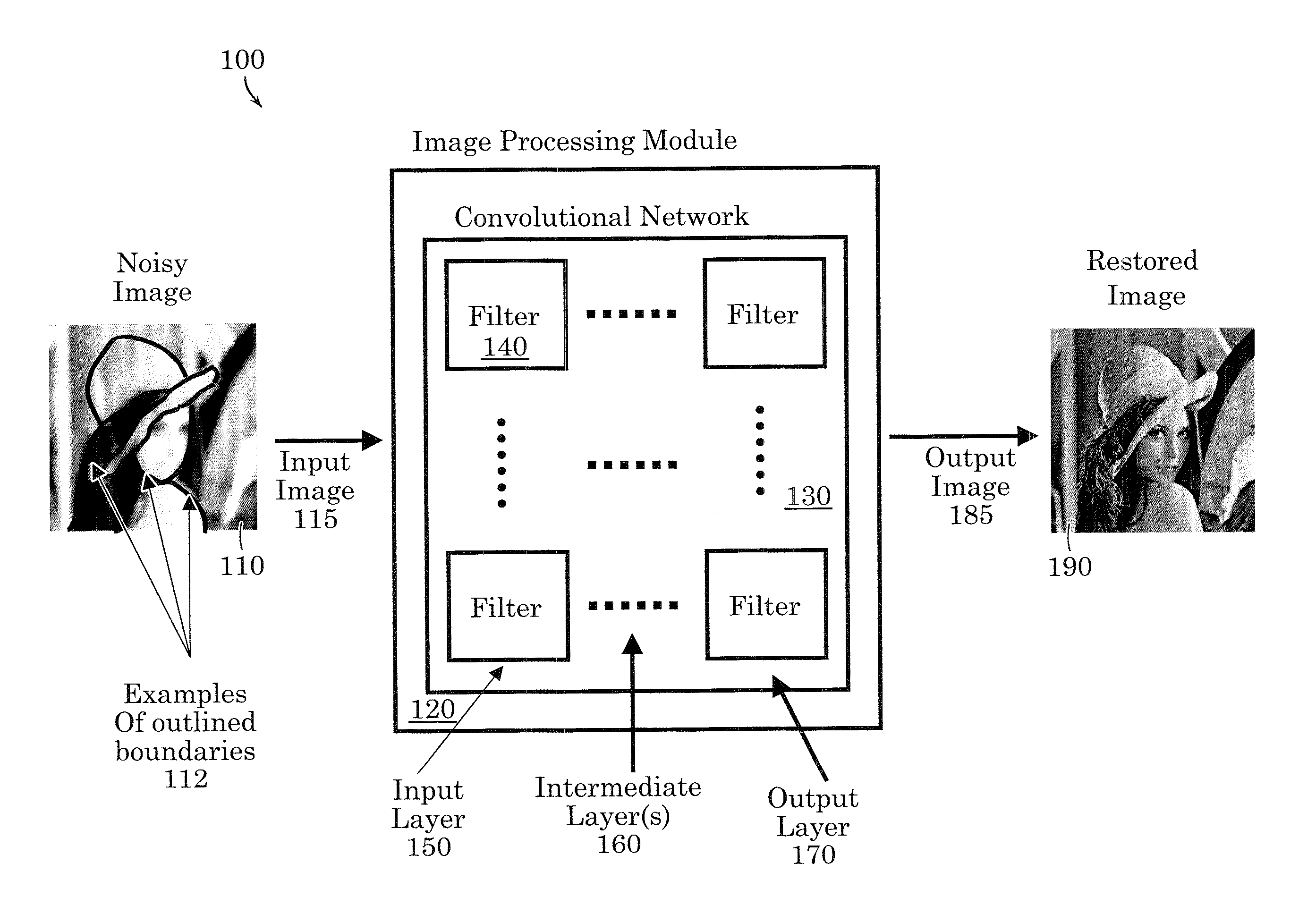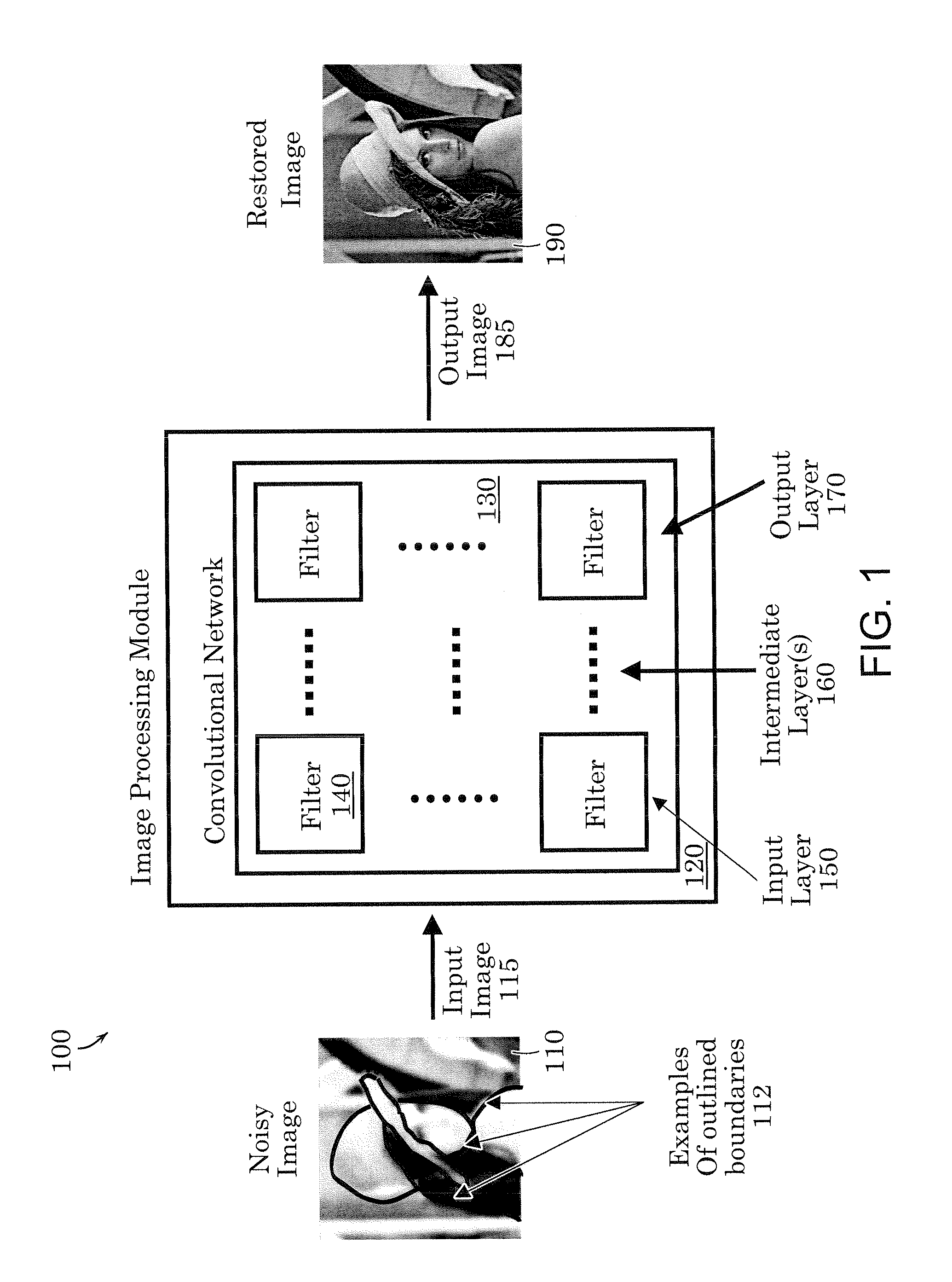Method and apparatus for image processing
a technology of image processing and apparatus, applied in the field of method and apparatus for image processing, can solve the problems of destroying the ability to segment such objects, affecting the image quality of the object, and small differences in performance, and achieve the effect of increasing the resolution of the output image and higher resolution
- Summary
- Abstract
- Description
- Claims
- Application Information
AI Technical Summary
Benefits of technology
Problems solved by technology
Method used
Image
Examples
Embodiment Construction
[0046]A description of example embodiments of the invention follows.
[0047]FIG. 1 is a block diagram 100 of an example embodiment of the present invention in which convolutional network(s) are trained using gradient learning to solve a problem of restoring noisy or degraded images. In this example embodiment, an image processing module 120 takes a noisy or degraded image 110 as an input image 115. The input image 115 is then used as a training dataset for training a convolutional network 130 of the image processing module 120 to solve the problem of restoring the degraded input image 115.
[0048]Image processing module 120 of this example embodiment may be applied to images of various forms, originating from a vast range of sources such as old photos, video frames, medical images, and etc. in two or higher-dimensions.
[0049]The convolutional network 120 may be constructed from multiple layers of filters 140. Typically, the architecture may include of an input layer 150 that encodes one ...
PUM
 Login to View More
Login to View More Abstract
Description
Claims
Application Information
 Login to View More
Login to View More - R&D
- Intellectual Property
- Life Sciences
- Materials
- Tech Scout
- Unparalleled Data Quality
- Higher Quality Content
- 60% Fewer Hallucinations
Browse by: Latest US Patents, China's latest patents, Technical Efficacy Thesaurus, Application Domain, Technology Topic, Popular Technical Reports.
© 2025 PatSnap. All rights reserved.Legal|Privacy policy|Modern Slavery Act Transparency Statement|Sitemap|About US| Contact US: help@patsnap.com



